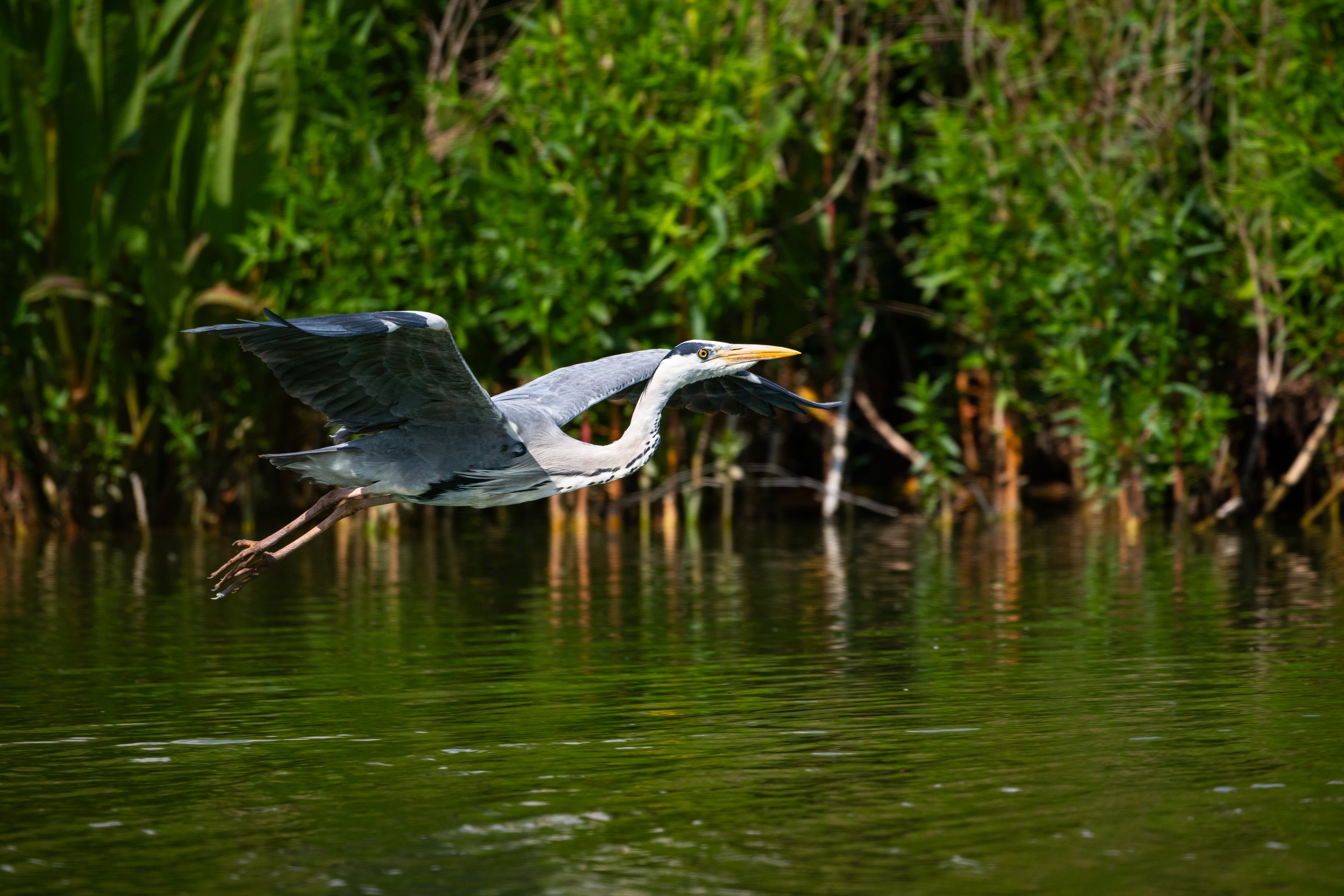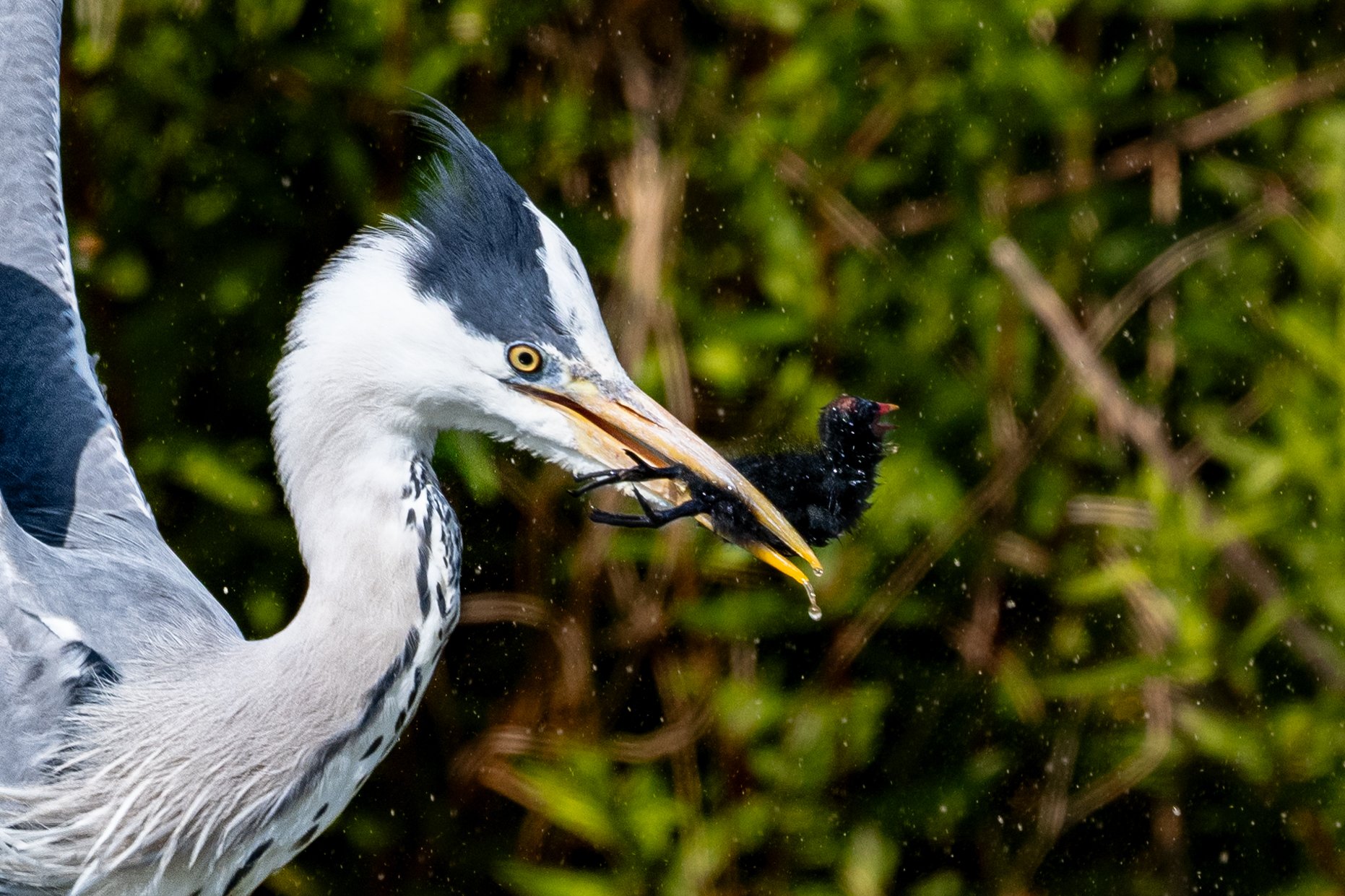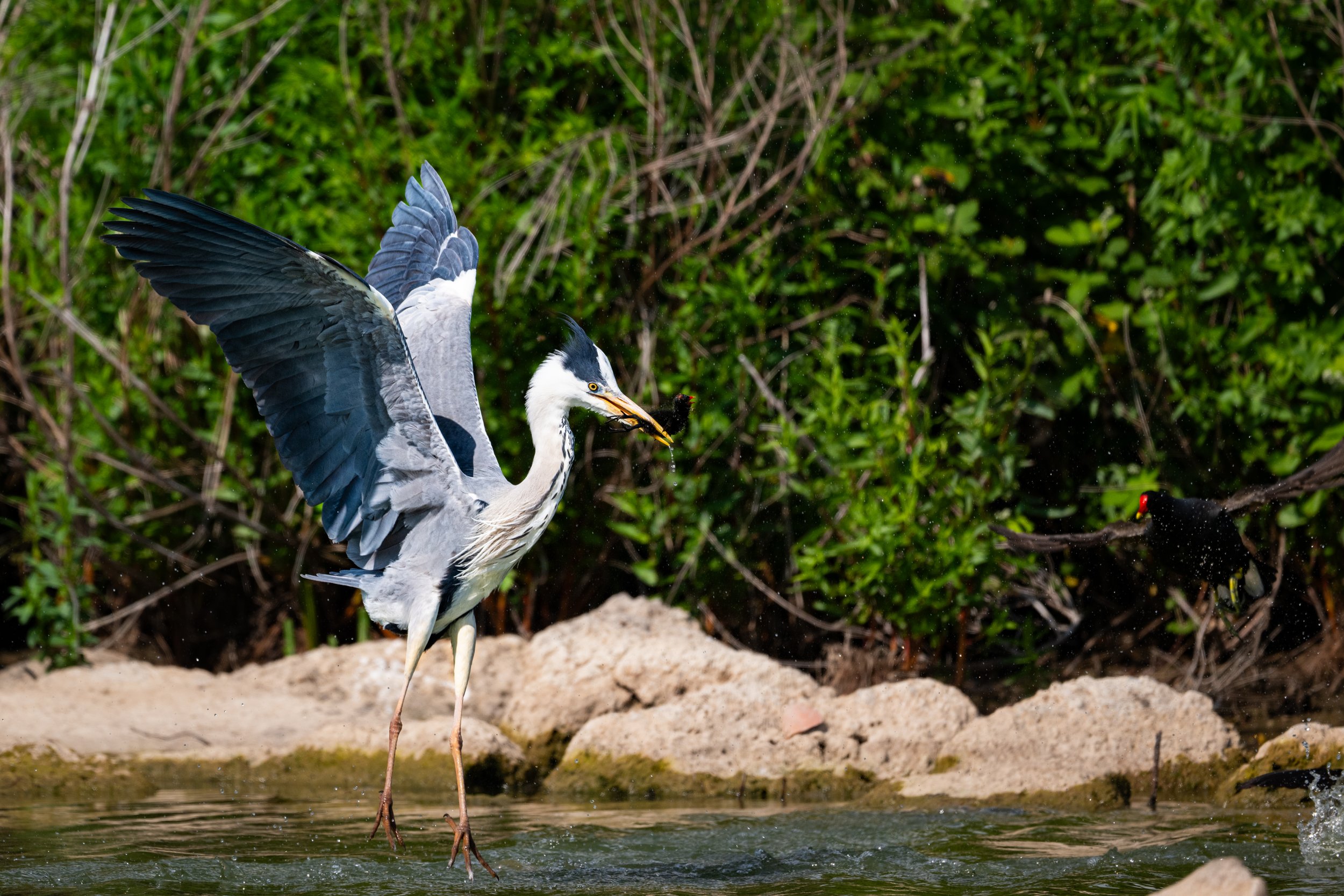Heron Hunt at WWT London Wetlands Centre
Hidden in a reed-lined hide for hours, I waited to catch a heron hunting beyond its usual fish diet. Eventually, a moorhen family emerged—mother and chicks inching through the shallows. Without warning, the heron struck, snatching a chick in a swift, silent flash. Shutter clicks shattered the stillness as the frantic mother moorhen lunged too late to save her baby. Although it was heartbreaking to witness, such predator-prey moments are vital for balancing wetland ecosystems, reminding us of nature’s relentless cycle.
Interesting Facts
Grey herons sometimes nest in large colonies called heronries high in treetops, and they won’t hesitate to eat smaller birds if the opportunity arises. Moorhens, with their bright bills and surprisingly long toes, can even adopt stray chicks into their own brood. Both species help keep wetlands healthy by controlling prey populations and vegetation, a little-known but crucial role in preserving these delicate habitats.
Author: Victor Sulakvelidze

It all started with a flight photo. Herons strike without giving any signs. This is why you always follow herons flight!

Instant dive zeroed in at the moorhens chick, sending it under the water. Mother is full tilt trying to reach the chick

Clamped chick close up

It was not even a shot between these and heron already took off

Tying to land on an island with its catch heron is still being attacked by a desperate mother. It was her last strike...

Landing on the other side of the island this is the last moment of the chick being alive. I was the only one who saw this shattering moment of everyday life...